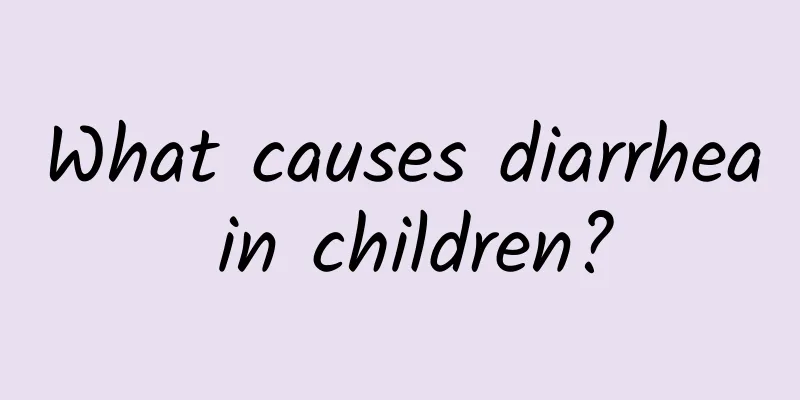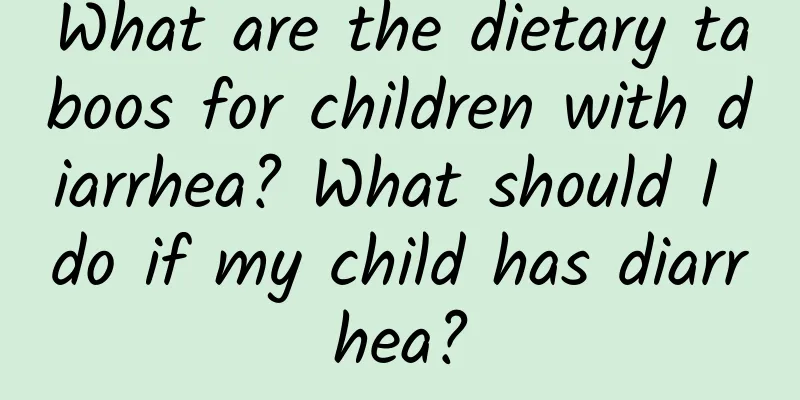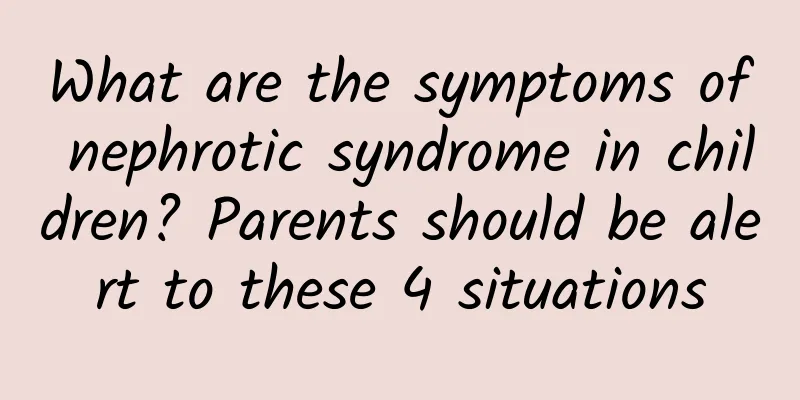What causes diarrhea in children?

|
Children are in the process of growing up, and because of their poor resistance, they are very likely to suffer from pediatric diarrhea. This disease is a particularly common disease, and sometimes it will find children unknowingly, so it must attract our attention. So what are the causes of this disease? Let's take a look and you will know. 1. Non-infectious factors ① The gastrointestinal tract of infants is not fully developed and the enzyme activity is low, but their nutritional needs are relatively high and the gastrointestinal burden is heavy. ② During infancy, the nervous, endocrine, circulatory systems, liver and kidney functions are immature and the regulatory functions are poor. ③ The immune function of infants is also imperfect. The serum E. coli antibody titer is lowest from birth to 2 years old, and then gradually increases. Therefore, infants and young children are prone to E. coli enteritis. The E. coli antibody titer in breast milk is high, especially the pathogenic E. coli secretory IgA in colostrum is high, so breastfed children are less likely to get sick and the disease is also mild. Similarly, infants have low rotavirus antibodies, and when the same group is epidemic, infants are more likely to get sick. ④ The distribution of body fluids in infants is different from that in adults. Extracellular fluid accounts for a higher proportion, and water metabolism is vigorous, and the regulatory function is poor, which makes it easier for body fluid and electrolyte disorders to occur. Infants are prone to rickets and malnutrition, which can easily lead to digestive disorders. At this time, the intestinal secretory IgA is insufficient, and diarrhea is prone to protracted. 2. Infectious factors It is divided into intra-digestive tract infection and extra-digestive tract infection, with the former being the main type. (1) Infection in the digestive tract: Pathogenic microorganisms can enter the digestive tract of children through contaminated food or water, and are therefore prone to occur in artificially fed children. If the utensils or food used for feeding are not disinfected or are not disinfected enough, infection is also possible. Viruses can also be transmitted through the respiratory tract or water sources. The second is infection by adult carriers of bacteria (viruses). For example, after an outbreak of bacterial (or viral) enteritis in a ward, some medical staff are infected and become asymptomatic intestinal carriers of bacteria (viruses), which can lead to the spread of pathogens. (2) Extra-digestive tract infection: Infection of organs and tissues outside the digestive tract can also cause diarrhea, which is common in otitis media, pharyngitis, pneumonia, urinary tract infection and skin infection. Diarrhea is usually not serious and is more common in younger people. The cause of diarrhea is partly due to extra-intestinal infection causing digestive dysfunction, and partly due to infection of the same pathogen (mainly viruses) inside and outside the intestine. (3) Intestinal flora disturbance caused by the abuse of antibiotics: Long-term and large-scale use of broad-spectrum antibiotics such as chloramphenicol, kanamycin, gentamicin, ampicillin, and various cephalosporins, especially when two or more are used together, can directly stimulate the intestines or stimulate the autonomic nerves to cause increased intestinal motility, reduced glucose absorption, and reduced disaccharidase activity, resulting in diarrhea. More seriously, it can cause intestinal flora disturbance. At this time, normal intestinal Escherichia coli disappears or significantly decreases, while drug-resistant Staphylococcus aureus, Proteus, Pseudomonas aeruginosa, Clostridium difficile, or Candida albicans can multiply in large numbers, causing enteritis that is difficult to control with drugs. Through understanding the above content, I believe parents and friends know the causes of diarrhea in children. They must pay attention to it in life. If the child shows symptoms of the disease, they must be treated in time. Pay more attention to the child’s physical condition and let the child develop good eating habits and eat more fruits and vegetables. |
>>: Why do children have diarrhea?
Recommend
What are the precautions for children with kidney disease?
What are the precautions for children with kidney...
What are the principles of polio treatment?
Poliomyelitis is a common disease in life. The tr...
The difference between herpangina and hand, foot and mouth disease. Is herpangina hand, foot and mouth disease?
Herpetic pharyngitis is an acute infectious phary...
What is the difference between cerebral palsy and polio?
Poliomyelitis troubles many parents. Many patient...
How to cure patent ductus arteriosus in newborns?
Patent ductus arteriosus is a congenital heart di...
Is massage effective in relieving baby's indigestion? What are the hazards of indigestion?
Indigestion in children is mainly manifested by p...
Do you know the common sense about acute laryngitis in children?
The weather is getting cooler, and the temperatur...
How to diagnose hernia in children? Check whether there is any abnormality in the inguinal cleft
Pediatric hernia is one of the most common pediat...
How to treat and prevent indigestion in children?
Children's indigestion is a headache for pare...
What are the symptoms of mumps in children
The main symptoms of mumps in children include sw...
The harm of ADHD to children's healthy growth
According to relevant data surveys, a foreign stu...
The best time for pediatric hernia surgery and precautions after pediatric hernia surgery
Pediatric hernia is a common symptom in children....
What are the dietary taboos for acute laryngitis in children?
Now we are about to enter the autumn and winter s...
Is herpetic pharyngitis hand, foot and mouth disease?
Herpangina is not hand, foot and mouth disease. H...
What to do about breast milk jaundice
Breast milk jaundice is a common type of neonatal...









